100 views of carl otto czeschka
Labels: carl otto czeschka, detective, hiroshige ando
 on her stunning anthology of a website, featuring dozens of beautifully illustated books, the webmaster says, [Die Nibelungen by Carl Otto Czeschka is] "The best Art Nouveau illustrated book. Period ! The scans doesn't do justice to the images, heightened in gold. A pure delight. Enjoy."
on her stunning anthology of a website, featuring dozens of beautifully illustated books, the webmaster says, [Die Nibelungen by Carl Otto Czeschka is] "The best Art Nouveau illustrated book. Period ! The scans doesn't do justice to the images, heightened in gold. A pure delight. Enjoy." the whole of hokusai's manga volume one is here. if anyone knows of anywhere the others are in their entirety, i'd love to know.
the whole of hokusai's manga volume one is here. if anyone knows of anywhere the others are in their entirety, i'd love to know.Labels: carl otto czeschka, detective, hokusai

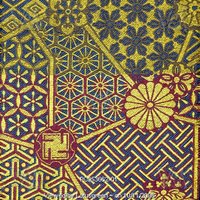 No great artist ever sees things as they really are. If he did, he would cease to be an artist. Take an example from our own day. I know that you are fond of Japanese things. Now, do you really imagine that the Japanese people, as they are presented to us in art, have any existence? If you do, you have never understood Japanese art at all. The Japanese people are the deliberate self-conscious creation of certain individual artists. If you set a picture by Hokusai, or Hokkei, or any of the great native painters, beside a real Japanese gentleman or lady, you will see that there is not the slightest resemblance between them. The actual people who live in Japan are not unlike the general run of English people; that is to say, they are extremely commonplace, and have nothing curious or extraordinary about them.
No great artist ever sees things as they really are. If he did, he would cease to be an artist. Take an example from our own day. I know that you are fond of Japanese things. Now, do you really imagine that the Japanese people, as they are presented to us in art, have any existence? If you do, you have never understood Japanese art at all. The Japanese people are the deliberate self-conscious creation of certain individual artists. If you set a picture by Hokusai, or Hokkei, or any of the great native painters, beside a real Japanese gentleman or lady, you will see that there is not the slightest resemblance between them. The actual people who live in Japan are not unlike the general run of English people; that is to say, they are extremely commonplace, and have nothing curious or extraordinary about them.
 In fact the whole of Japan is a pure invention. There is no such country, there are no such people. One of our most charming painters [whistler] went recently to the Land of the Chrysanthemum in the foolish hope of seeing the Japanese. All he saw, all he had the chance of painting, were a few lanterns and some fans. He was quite unable to discover the inhabitants, as his delightful exhibition at Messrs. Dowdeswell's Gallery showed only too well. He did not know that the Japanese people are, as I have said, simply a mode of style, an exquisite fancy of art. And so, if you desire to see a Japanese effect, you will not behave like a tourist and go to Tokio. On the contrary, you will stay at home and steep yourself in the work of certain Japanese artists, and then, when you have absorbed the spirit of their style, and caught their imaginative manner of vision, you will go some afternoon and sit in the Park or stroll down Piccadilly, and if you cannot see an absolutely Japanese effect there, you will not see it anywhere.
In fact the whole of Japan is a pure invention. There is no such country, there are no such people. One of our most charming painters [whistler] went recently to the Land of the Chrysanthemum in the foolish hope of seeing the Japanese. All he saw, all he had the chance of painting, were a few lanterns and some fans. He was quite unable to discover the inhabitants, as his delightful exhibition at Messrs. Dowdeswell's Gallery showed only too well. He did not know that the Japanese people are, as I have said, simply a mode of style, an exquisite fancy of art. And so, if you desire to see a Japanese effect, you will not behave like a tourist and go to Tokio. On the contrary, you will stay at home and steep yourself in the work of certain Japanese artists, and then, when you have absorbed the spirit of their style, and caught their imaginative manner of vision, you will go some afternoon and sit in the Park or stroll down Piccadilly, and if you cannot see an absolutely Japanese effect there, you will not see it anywhere.
 Japan is more than just fancy but Wilde's senti- ments capture the mystique that surrounds the subject. When Americans first learned about Japan in the mid-19th century, it must have seemed a very peculiar place indeed. Nearly everything about the Japanese culture and lifestyle was a novelty and a complete enigma. Travelers to Japan, both then and now, attempted to discover the things which made Japan tick. Edward Said wrote in his book Orientalism that westerners have perceived the Orient through generations of enduring stereotype and even today there is an abundant literature by supposed experts on how to understand Japan and its people.*
Japan is more than just fancy but Wilde's senti- ments capture the mystique that surrounds the subject. When Americans first learned about Japan in the mid-19th century, it must have seemed a very peculiar place indeed. Nearly everything about the Japanese culture and lifestyle was a novelty and a complete enigma. Travelers to Japan, both then and now, attempted to discover the things which made Japan tick. Edward Said wrote in his book Orientalism that westerners have perceived the Orient through generations of enduring stereotype and even today there is an abundant literature by supposed experts on how to understand Japan and its people.*
 "I feel an irresistible desire to wander, and go to Japan, where I will pass my youth, sitting under an almond tree, drinking almond tea out of a blue cup, and looking at a landscape without perspective" - Oscar Wilde (1882)
"I feel an irresistible desire to wander, and go to Japan, where I will pass my youth, sitting under an almond tree, drinking almond tea out of a blue cup, and looking at a landscape without perspective" - Oscar Wilde (1882)
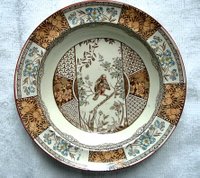 another tricky thing is.... even the "experts" nowadays can't tell, apparently, what the japanese made for themselves, and what they made strictly for expert. not just in prints, but in crafts as well, much of what we see in the aesthetic movement are reflections of japanese crafts that were designed specifically, and exclusively, for western markets.
another tricky thing is.... even the "experts" nowadays can't tell, apparently, what the japanese made for themselves, and what they made strictly for expert. not just in prints, but in crafts as well, much of what we see in the aesthetic movement are reflections of japanese crafts that were designed specifically, and exclusively, for western markets.Labels: aesthetic movement, comment, edward godwin, minton, wallpaper, wedgewood
 i love these prints so much; i can't say why. the first on the right, here, is by margaret jordan patterson. she was a student of arthur wesley dow. i was fortunate enough to find a calendar a while back with this in it, so i've had it on my wall for many years. i could stare at it forever.
i love these prints so much; i can't say why. the first on the right, here, is by margaret jordan patterson. she was a student of arthur wesley dow. i was fortunate enough to find a calendar a while back with this in it, so i've had it on my wall for many years. i could stare at it forever. this one is actually a contemporary painting by a man named thomas paquette. it fascinates me that he never saw mjp's image, never even heard of her. his work is one of the only painter's work that i can see the influence of japanese prints in the technique, not necessarily the subject matter nor even the style, exactly. it's the distinctness of each color, as though, or actually, outlined. something about the ways he uses color, i've seen only in shin hanga before; the translucency of the colors, the transparency of solid objects -- that he achieves this with oil or gouache is amazing.
this one is actually a contemporary painting by a man named thomas paquette. it fascinates me that he never saw mjp's image, never even heard of her. his work is one of the only painter's work that i can see the influence of japanese prints in the technique, not necessarily the subject matter nor even the style, exactly. it's the distinctness of each color, as though, or actually, outlined. something about the ways he uses color, i've seen only in shin hanga before; the translucency of the colors, the transparency of solid objects -- that he achieves this with oil or gouache is amazing.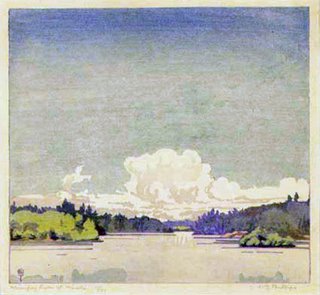 walter j phillips was an etcher who grew dissatisfied with working in black and white. in the studio, he read of the woodblock prints being distributed and done in europe, and decided to give it a try. a trip to europe several years later where he met with other printmakers, japanese and european, filled in some fine points for him, and taught him about japanese papers.
walter j phillips was an etcher who grew dissatisfied with working in black and white. in the studio, he read of the woodblock prints being distributed and done in europe, and decided to give it a try. a trip to europe several years later where he met with other printmakers, japanese and european, filled in some fine points for him, and taught him about japanese papers.Labels: clouds, margaret jordan patterson, thomas paquette, walter j phillips
 It is with the delicious surprise of the first journey through Japanese streets--unable to make one's kuruma-runner understand anything but gestures, frantic gestures to roll on anywhere, everywhere, since all is unspeakably pleasurable and new--that one first receives the real sensation of being in the Orient, in this Far East so much read of, so long dreamed of, yet, as the eyes bear witness, heretofore all unknown.
It is with the delicious surprise of the first journey through Japanese streets--unable to make one's kuruma-runner understand anything but gestures, frantic gestures to roll on anywhere, everywhere, since all is unspeakably pleasurable and new--that one first receives the real sensation of being in the Orient, in this Far East so much read of, so long dreamed of, yet, as the eyes bear witness, heretofore all unknown.
 how does yoshida hiroshi's lovely view of a cherry-blossoming japan's women jibe with photos of how women really looked in 1935, when that print was made?
how does yoshida hiroshi's lovely view of a cherry-blossoming japan's women jibe with photos of how women really looked in 1935, when that print was made?
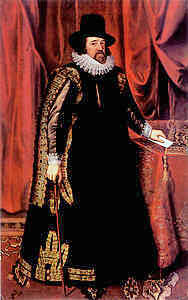 if the west had been isolationist for nearly 250 years, what would we have been wearing in 1853 when another culture sailed in and broke up our isolation?
if the west had been isolationist for nearly 250 years, what would we have been wearing in 1853 when another culture sailed in and broke up our isolation?Labels: comment, fashion, toshi yoshida

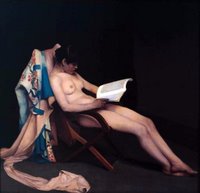
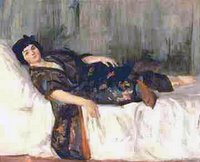
 i've been down- loading items for years, and they have now found a use. and i've been down- loading more. i have to keep them organized, and i have one folder for the images of women i've collected for this blog.
i've been down- loading items for years, and they have now found a use. and i've been down- loading more. i have to keep them organized, and i have one folder for the images of women i've collected for this blog. (though they can't fit that way in this format, these were all in a straight line, skin, black, skin, black. the first skin is by theodore roussel. black gown is by john sloan. the 'fragrance of the hot springs' is by torii kotondo, and the last one is by ito shinsui. in this layout, however, i think it's really easy to see the difference in styles. added later: aha! i thought of a way to do it. click it to see it big.)
(though they can't fit that way in this format, these were all in a straight line, skin, black, skin, black. the first skin is by theodore roussel. black gown is by john sloan. the 'fragrance of the hot springs' is by torii kotondo, and the last one is by ito shinsui. in this layout, however, i think it's really easy to see the difference in styles. added later: aha! i thought of a way to do it. click it to see it big.)Labels: ito shinsui, roussel, sloan, torii kotondo
 the man's name was bing. s. bing. he has two first names upon which no one seems to be able to agree:
the man's name was bing. s. bing. he has two first names upon which no one seems to be able to agree: in order to encourage the interest and sales in japanese arts and crafts, which he also imported and sold, bing started a magazine, le japon artistique, which lasted three years. in it he educated, featured, and fascinated his worldwide readership (it was printed in three languages) with color reproductions and early photography of the objects he was importing and wishing to sell.
in order to encourage the interest and sales in japanese arts and crafts, which he also imported and sold, bing started a magazine, le japon artistique, which lasted three years. in it he educated, featured, and fascinated his worldwide readership (it was printed in three languages) with color reproductions and early photography of the objects he was importing and wishing to sell. across the globe, another entrepreneur, not an artist, was soon to coin his own phrase: shin hanga. new prints. watanabe shozaburo was every bit the showman as was s bing. and his instincts were his guides as well. european educators who had been invited into japan, the meiji government's rush into all things new, put a halt on the japanese interest in the very prints, the ukiyo-e, that had been so fascinating the west. and even that market was dwindling.
across the globe, another entrepreneur, not an artist, was soon to coin his own phrase: shin hanga. new prints. watanabe shozaburo was every bit the showman as was s bing. and his instincts were his guides as well. european educators who had been invited into japan, the meiji government's rush into all things new, put a halt on the japanese interest in the very prints, the ukiyo-e, that had been so fascinating the west. and even that market was dwindling.Labels: art nouveau, kawase hasui, s bing